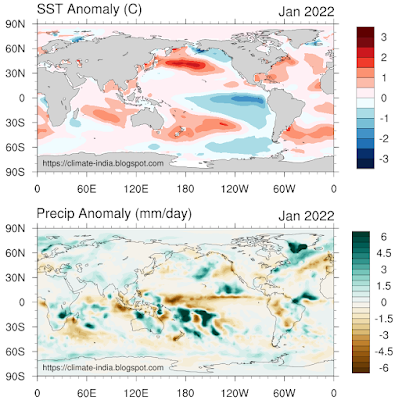Heavy Rainfall Events in India: January 2022

India Meteorological Department classifies the heavy rainfall events received in a day, during the 24 hours period as per the following criteria: Heavy Rainfall event: 64.5 to 115.5 mm Very Heavy Rainfall event: 115.6 to 204.4 mm Extremely Heavy Rainfall events: >204.4 mm Heavy Rainfall Events: January 2022 During January 2022, there were 89 stations reported heavy rainfall (64.5 to 115.5 mm), nine stations reported very heavy rainfall (115.6 to 204.4 mm), one station received extremely heavy rainfall ( >204.4 mm). The locations of these stations are given in Figure 1. Figure 1: The locations of heavy rainfall events, very heavy rainfall events, and extremely heavy rainfall events in the month of January 2022 [Source: India Meteorological Department] Some of the stations over India also received record daily rainfall during the 24-hour period as per the given table.


